Great ride all the way too and from InZane. Special thanks to the VRCC staff this was a good one

. Folk's in charge of the " Granny Panties " decorations y'all outdid yourself this year

Very proud to say the entire trip that my rain gear never left my saddlebag we seemed to always be ahead or on the tail end of the heavy stuff . Had a great group of folks leave my hometown on day one for our first night in Sparta, NC. First picture took in my hometown along the beautiful Clinch River ( packed and ready to roll ) .
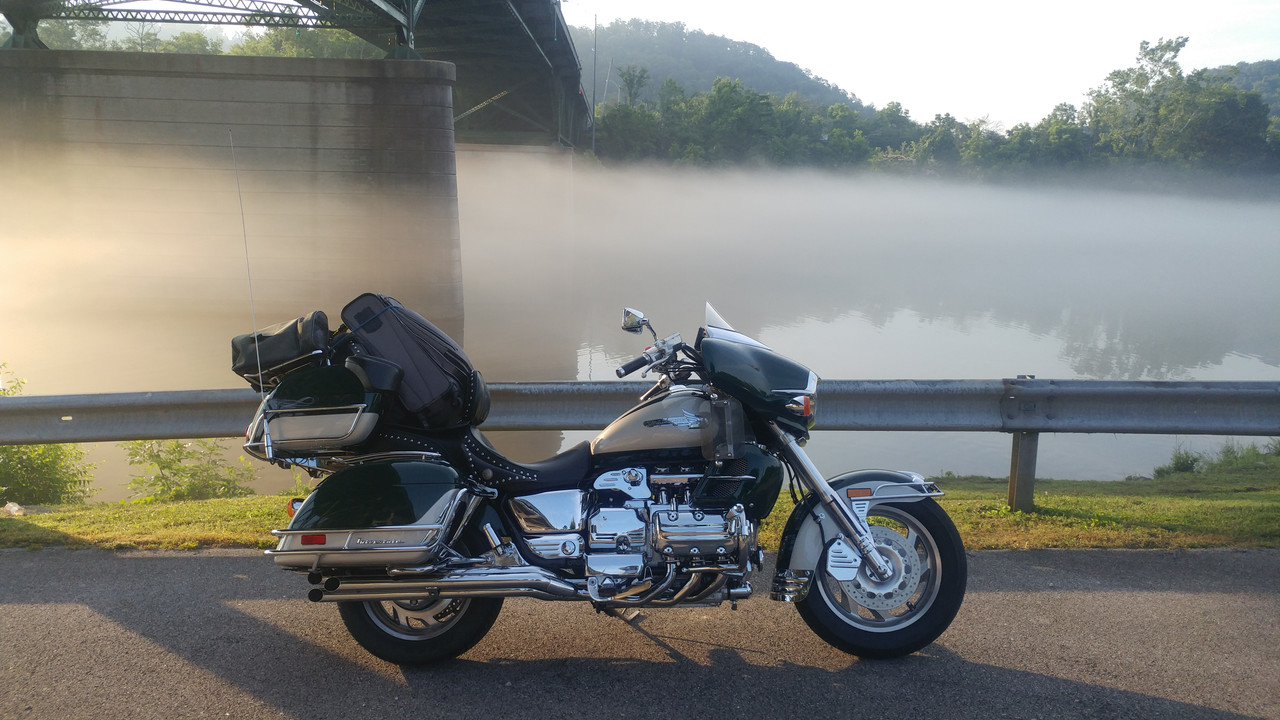
I take much blame in this next picture however I will add I let everyone know before we hit Hwy 66 better known to the motorcycle world as The Beast that it can and will bite you. Lucky for Ron from Texas he wasn't hurt only boo booed his bike.I should have knew better than take flat-landers on that road. Folk's was claimin' it was Trump's fault .

We exited The Blue Ridge Parkway soon after leaving Mabry Mill . They say this is the most photographed spot on the 469 miles of the BRP.
Mabry Mill is a watermill located at milepost 176.2 of Blue Ridge Parkway in Floyd County, Virginia. It is a tourist attraction mainly for the picturesque views of the mill itself. A short trail around the mill connects historical exhibits about life in rural Virginia. The trail allows visitors to view the gristmill, sawmill, and blacksmith shop.
Mabry Mill was built by Edwin Boston Mabry (E.B. Mabry). E.B. Mabry returned to Floyd County in 1903 and began the construction of the mill. It was first a blacksmith and wheelwright shop, then became a sawmill. By 1905 it was in operation as a gristmill. By 1910 the front part of the mill was completed and included a lathe for turning out wheel hubs, a tongue and groove lathe, a planer and a jig-saw. Between 1905 and 1914 E.B. Mabry bought adjacent tracts of land, mostly for the purpose of acquiring more water power.
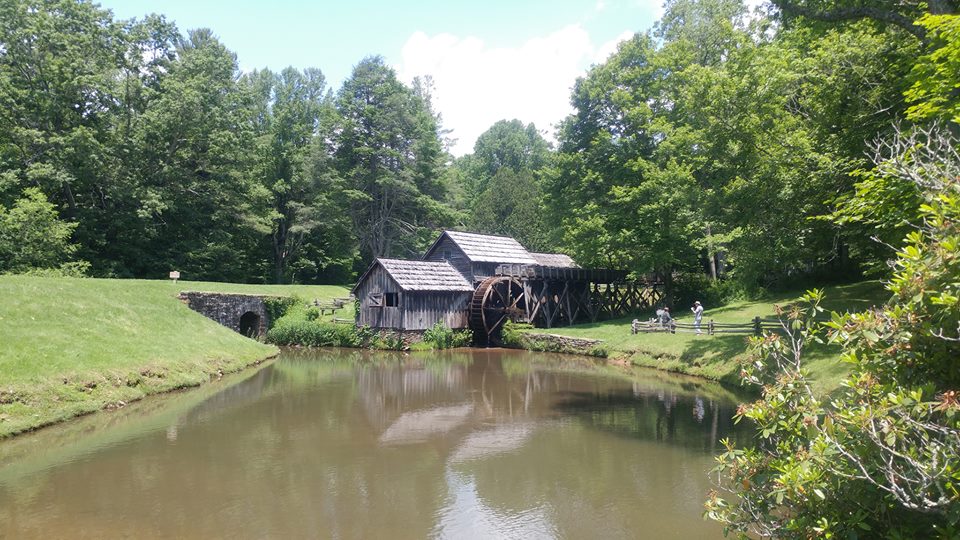
A couple pictures from The Blue Ridge Parkway at one of my favorite stops at MM post 10 " Ravens Roost " .
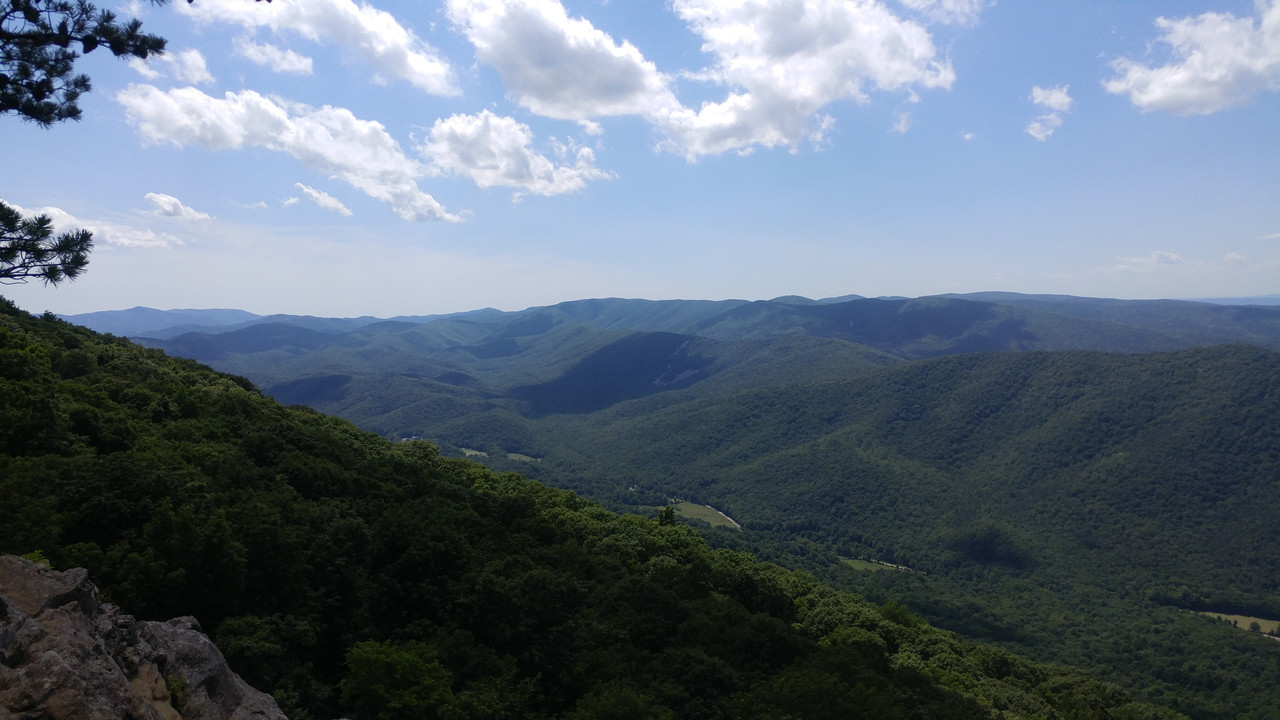
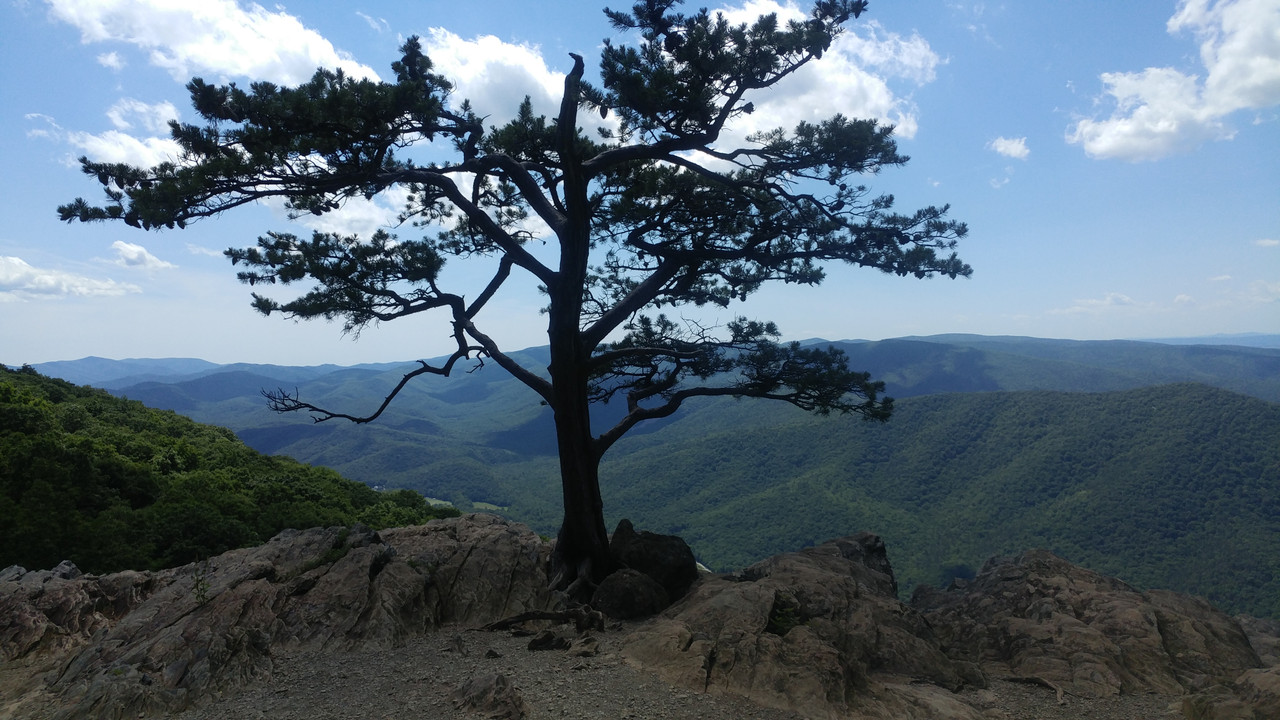
I'd like to also thank Mark ( 3fan4life ) for taking us on a history ride .
Thomas Jonathan "Stonewall" Jackson (January 21, 1824 – May 10, 1863) served as a Confederate general (1861–1863) during the American Civil War, and became one of the best-known Confederate commanders after General Robert E. Lee.Jackson played a prominent role in nearly all military engagements in the Eastern Theater of the war until his death, and played a key role in winning many significant battles.
Lee wrote to Jackson after learning of his injuries, stating: "Could I have directed events, I would have chosen for the good of the country to be disabled in your stead ". Jackson died of complications from pneumonia on May 10, 1863, eight days after he was shot. On his deathbed, though he became weaker, he remained spiritually strong, saying towards the end: "It is the Lord's Day; my wish is fulfilled. I have always desired to die on Sunday."
Dr. McGuire wrote an account of Jackson's final hours and last words:
A few moments before he died he cried out in his delirium, 'Order A.P. Hill to prepare for action! Pass the infantry to the front rapidly! Tell Major Hawks—' then stopped, leaving the sentence unfinished. Presently a smile of ineffable sweetness spread itself over his pale face, and he said quietly, and with an expression, as if of relief, 'Let us cross over the river, and rest under the shade of the trees.' I never knew about the lemons until Mike ( hupcap ) explained that Stonewall Jackson had a fondness for them and carried them with him. Not sure this picture shows them however several was at the base of his Monument.
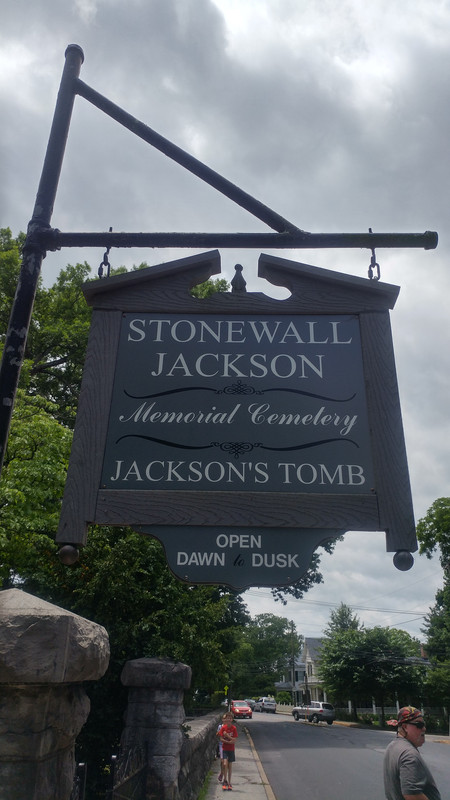
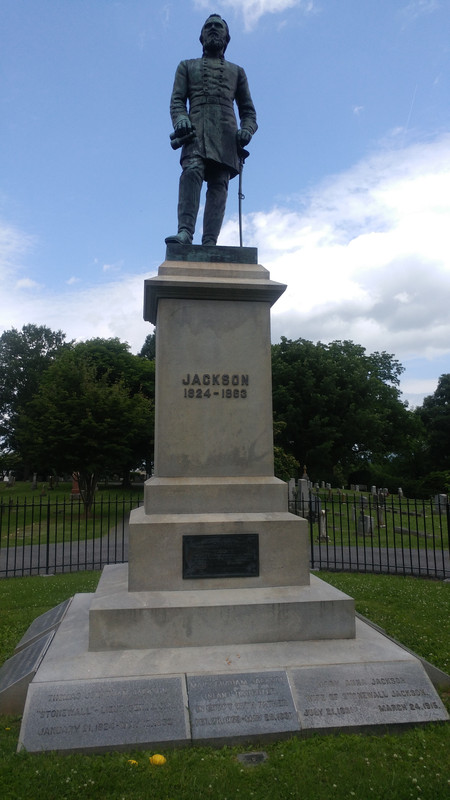
Robert Edward Lee (January 19, 1807 – October 12, 1870) was an American and Confederate soldier, best known as a commander of the Confederate States Army. He commanded the Army of Northern Virginia in the American Civil War from 1862 until his surrender in 1865. A son of Revolutionary War officer Henry "Light Horse Harry" Lee III, Lee was a top graduate of the United States Military Academy and an exceptional officer and military engineer in the United States Army for 32 years. During this time, he served throughout the United States, distinguished himself during the Mexican–American War, and served as Superintendent of the United States Military Academy.

His horse Traveller is also buried near his grave. Traveller (1857–1871) was Confederate General Robert E. Lee's most famous horse during the American Civil War. He was a grey American Saddlebred of 16 hands, notable for speed, strength and courage in combat. Lee acquired him in February 1862, and rode him in many battles. Traveller outlived Lee by only a few months, and had to be shot when he contracted untreatable tetanus. His name is often misspelled with a single ‘L’ in the American style, though Lee actually used the British style double ‘L’, rather than the more common spelling in the United States.
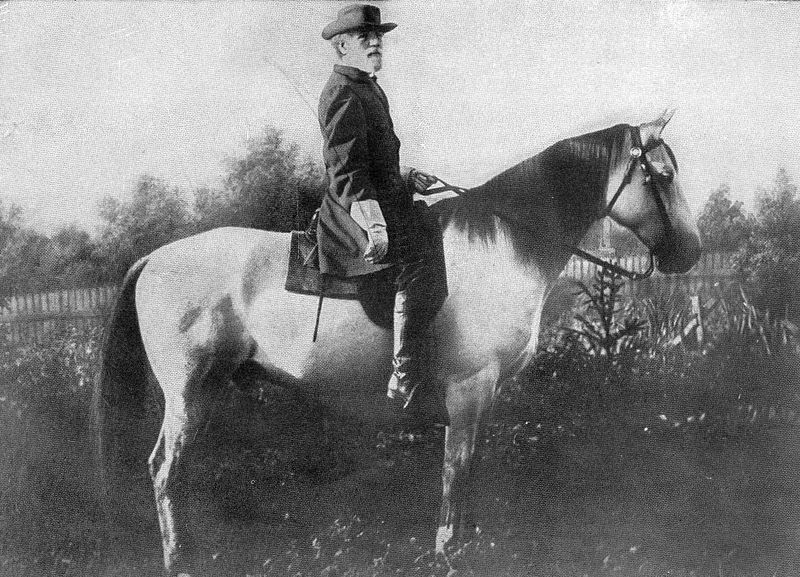
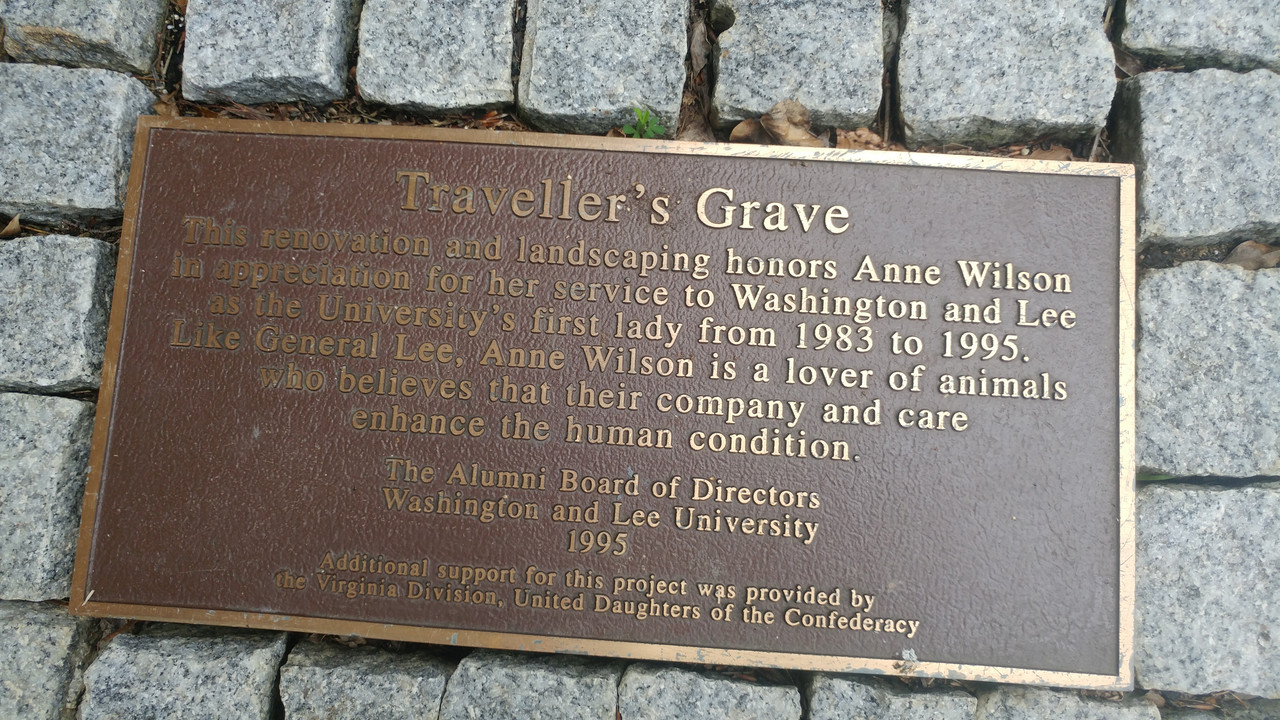

Mt. Torry Furnace, also known as Virginia Furnace, is a historic iron furnace located at Sherando, Augusta County, Virginia. It was built in 1804, and is a stone square trapezoid measuring 30 feet at the base and 40 feet tall. The original cold-blast charcoal stack was converted for hot blast in 1853. It shut down in 1855, then was reactivated in 1863 to support the Confederate States Army. The furnace was destroyed in June 1864 during the American Civil War by Brigadier General Alfred N. Duffié, then rebuilt in January 1865. It operated until 1884.
It was listed on the National Register of Historic Places in 1974.
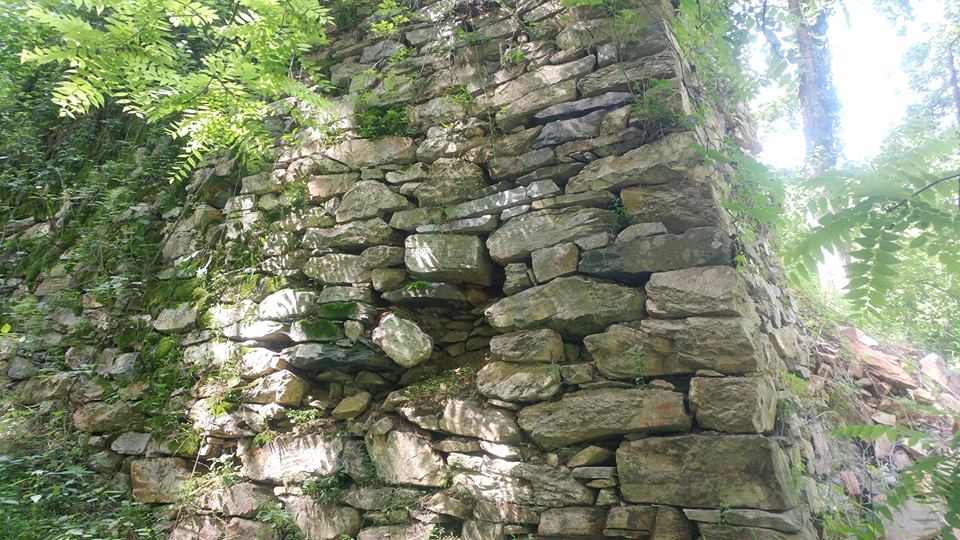
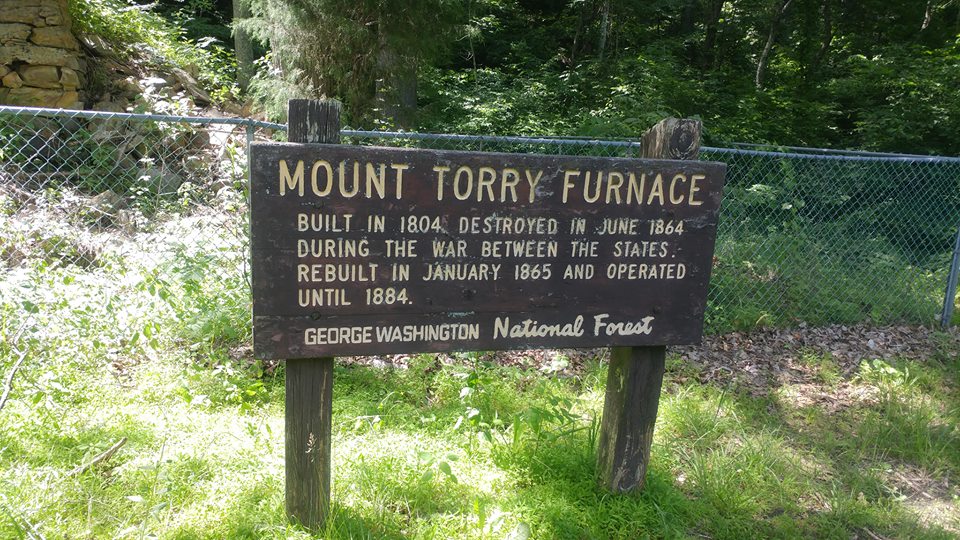
Another special thanks to Mike ( hubcap ) for taking us on a couple very nice rides out in the country. He did the leg work with his now famous to anyone that has ever rode with him " The Red Book " .

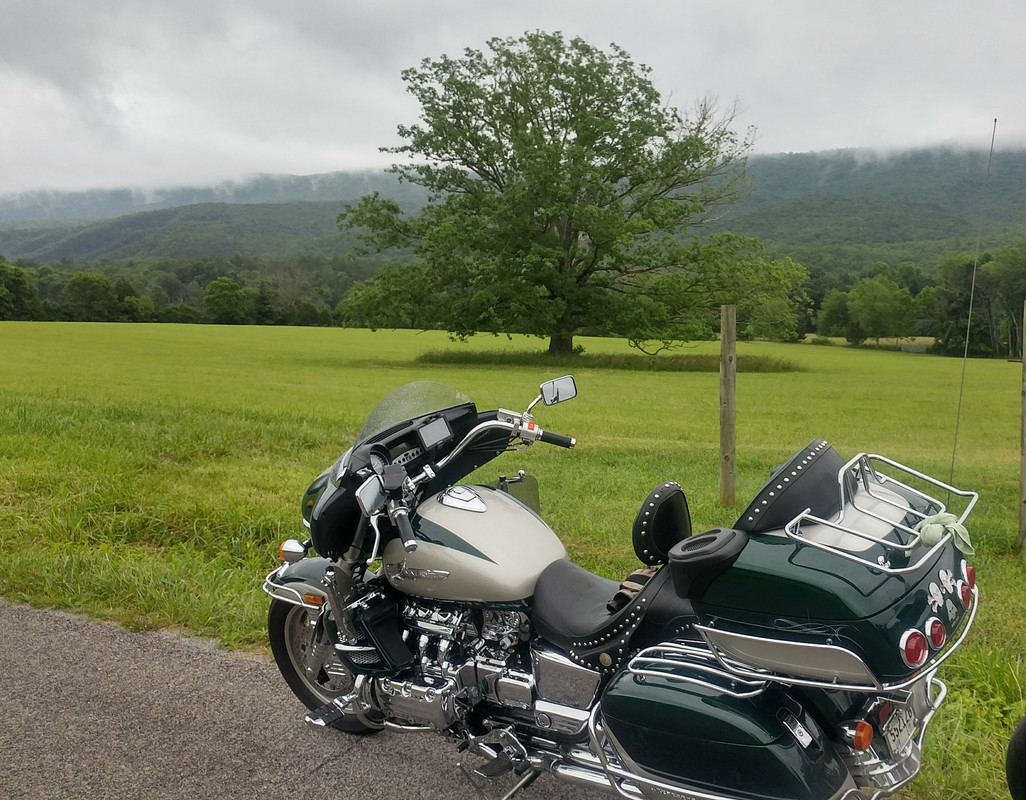
This was across the road from the BBQ place we had lunch at on the ride Mark took us on. Can't remember the town but I saw this and thought it was cool so I took a picture.
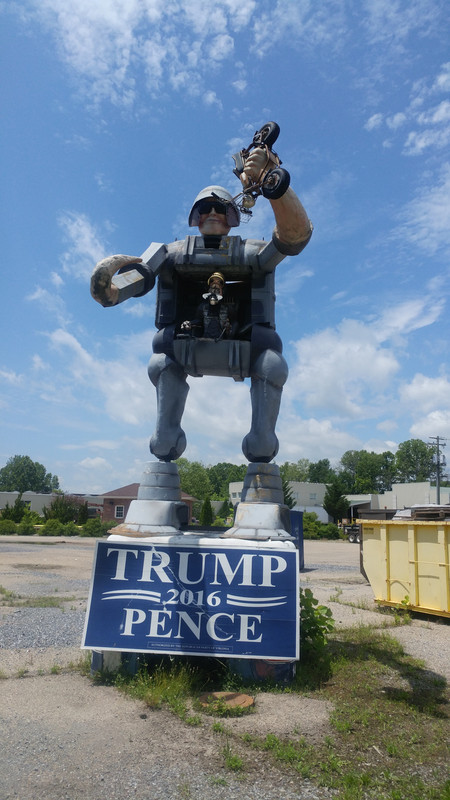
Skyline Drive is a 105-mile road that runs the entire length of the National Park Service's Shenandoah National Park in the Blue Ridge Mountains of Virginia, generally along the ridge of the mountains. This road is just like the BPR only it cost $25.00 to ride it we lucked last Saturday because it was a free pass day . Talked to this dude at one of our stops he said he had rode it 2,200 miles and counting it had a 32 inch wheel. I would so hurt myself on this " thang " .
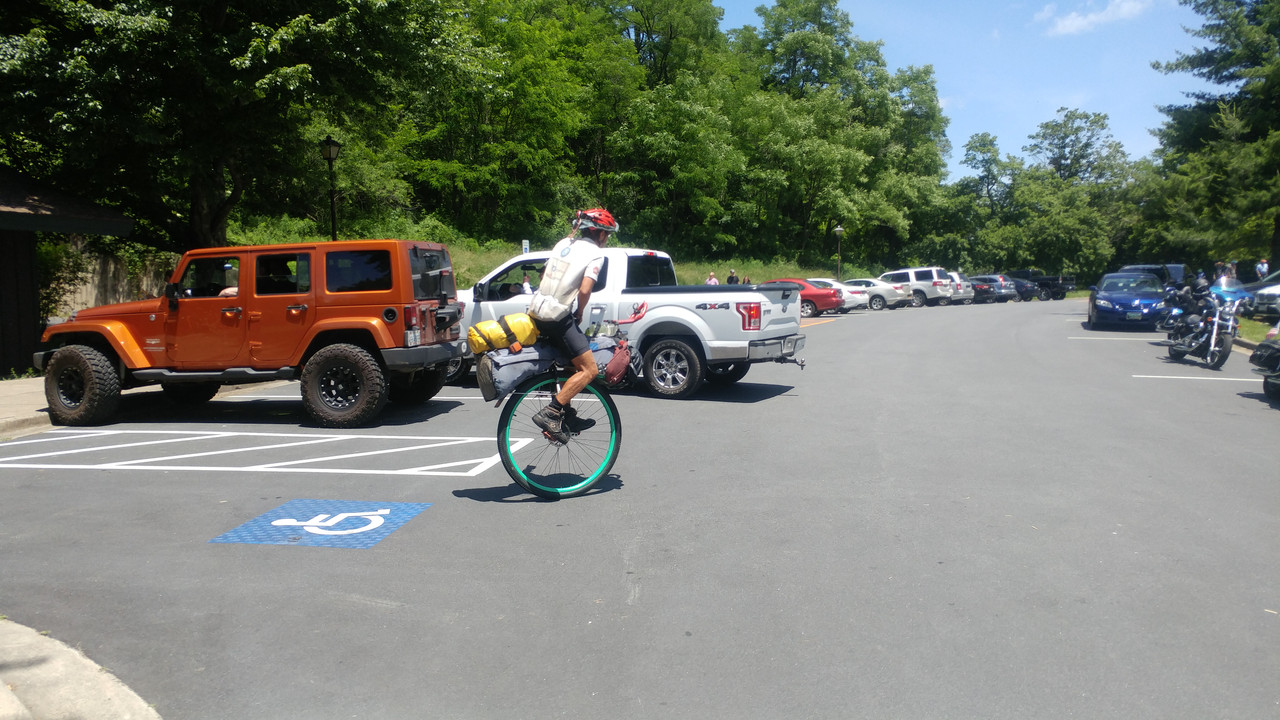
Couple pictures from Skyline Drive.

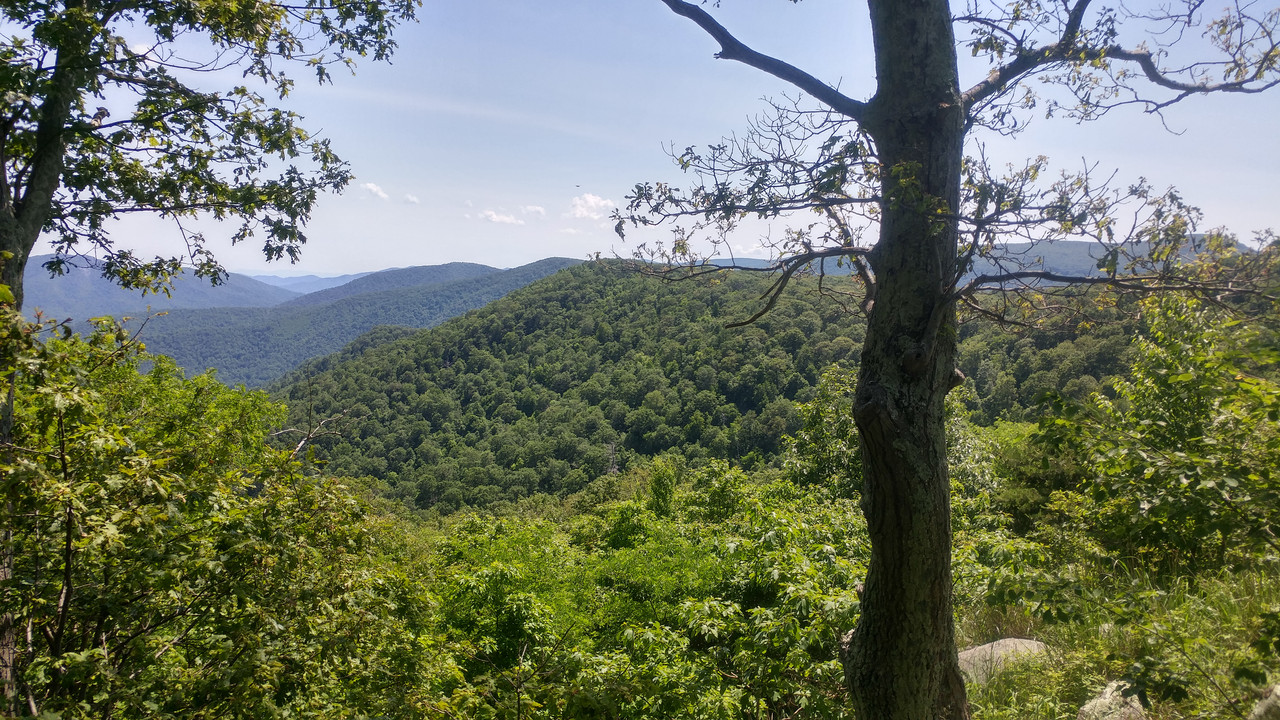
Seneca Rocks is a large crag and local landmark in Pendleton County in the Eastern Panhandle of West Virginia. The south peak is the only "true peak" — a peak inaccessible except by technical rock climbing techniques — on the East Coast of the United States. One of the best-known scenic attractions in West Virginia, the sheer rock faces are a popular challenge for rock climbers.
Seneca Rocks is easily visible from, and accessible by way of, West Virginia Route 28, West Virginia Route 55 and U.S. Route 33 in the Spruce Knob-Seneca Rocks National Recreation Area of the Monongahela National Forest. The three highways converge in the hamlet of Seneca Rocks, which is named for the cliffs nearby.My picture doesn't show it but folks was all over these rocks my friend Wimp said they looked like ants.
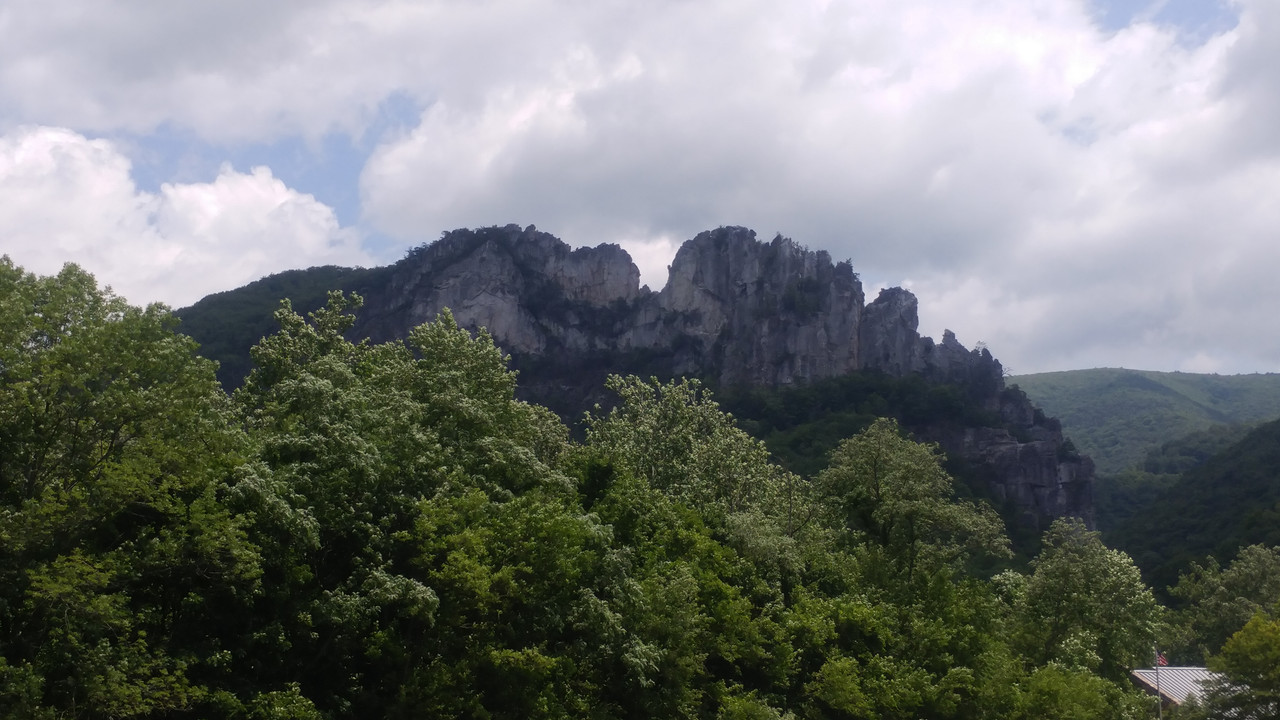
We followed Mark ( Mark81 ) out of West Virginia into Kentucky on our next to last day on the road. He took was to the Red River Gorge a outstanding place for motorcycling.
Nada Tunnel is a historic 900-foot long tunnel along Kentucky Route 77 in Powell County, Kentucky. Formerly a railway tunnel, the presently paved tunnel has often been described as the "Gateway to Red River Gorge" for the shortcut it provides motorists to the Red River Gorge canyons of the Daniel Boone National Forest.
Built for the Dana Lumber Company between 1910 and 1911.Nada Tunnel (pronounced nay-duh by locals ) was named from Nada, Kentucky, then a logging town about 10 miles past the tunnel's entrance. Solid limestone was blasted with dynamite and dug out with steam machinery and hand tools, with two teams working from each side of the ridge.
The tunnel's original dimensions were 12 by 12 feet but when the first train load of logs became stuck and had to be blasted free, the tunnel's height was increased to 13 feet. Narrow gauge steam locomotives of the Big Woods, Red River & Lombard Railroad regularly hauled timber extracted from the vast forests of the Red River Valley through the tunnel, to a sawmill 15 miles away in Clay City.
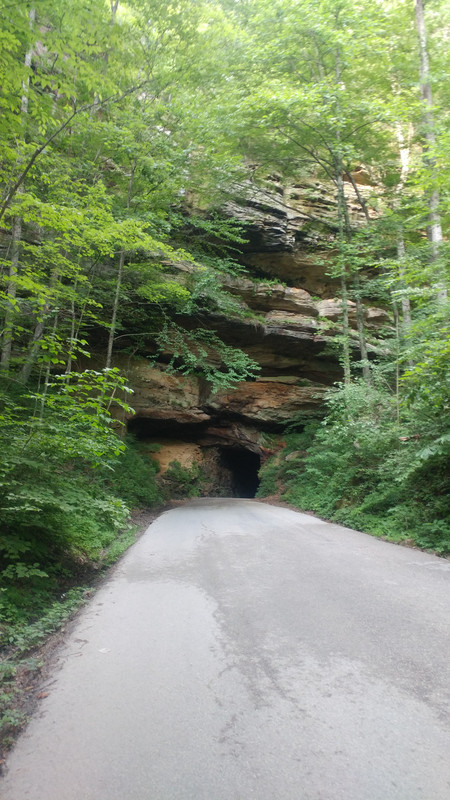
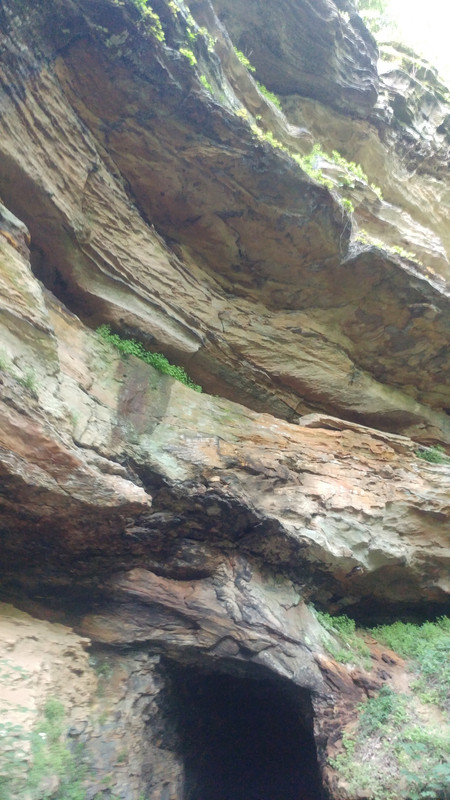
All and all a outstanding InZane and ride afterwards again thanks VRCC staff for helping keep the Valkyrie alive... Long Live The Dragon.

